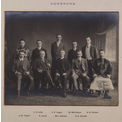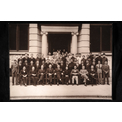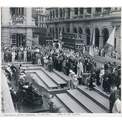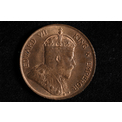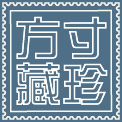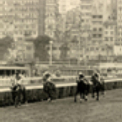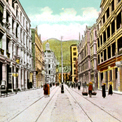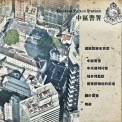 Collections
Collections Hong Kong Currency
Hong Kong Currency History of Hong Kong Currency
History of Hong Kong Currency Hong Kong's Currency before the Second World War
Hong Kong's Currency before the Second World War
Hong Kong has always enjoyed close trade ties with China: as early as the late nineteenth century, over half of Hong Kong’s currency had circulated in China. The city adopted the silver standard and retained it for over seventy years. Hong Kong stopped minting one-mil bronze coins after 1866, and all of the city’s coinage, except for the one-cent bronze coin, was then struck from silver. The metal content of the coins remained the same until 1935, but changes could be observed in their weight and size, the arrangement of the words and the British monarch’s portrait. In this same period up to the turn of the century, the number of note-issuing banks fell from six to two: The Hongkong and Shanghai Banking Corporation and the Chartered Bank of India, Australia and China. After a pause of twenty years, the Mercantile Bank of India Limited (later known as the Mercantile Bank) resumed issuing notes in 1912, bringing the total number of note-issuing banks back up to three. In November 1935, Hong Kong followed China in abolishing the silver standard. Silver was collected from the public to establish an Exchange Fund, denominated in British pounds, to serve as a note security fund. From then on, Hong Kong coins were no longer minted from silver, while the first government notes appeared. Banknotes have also been listed as legal tender in Hong Kong since that year.
Hong Kong Coinage before the Second World War
The portraits of successive British monarchs appeared on Hong Kong coins in the first half of the twentieth century, including King Edward VII in 1902, King George V in 1919 and King George VI in 1937. After 1905, the minting of twenty-cent coins was stopped, and only one-cent, five-cent, ten-cent and fifty-cent coins remained in circulation. At the same time, the widespread adoption of the “dragon dollar” in China prompted large quantities of Hong Kong coins circulating on the mainland to return to the city. The government subsequently suspended orders for new coins and recalled excess coins from the market to prevent depreciation. In 1935, the Hong Kong government abolished the silver standard. From then on, all Hong Kong coins were minted from cupronickel or nickel and a newly designed “security edge” was added to prevent counterfeiting. After the British trade dollar was abolished in 1937, the city’s coinage was standardised and issued exclusively by the Hong Kong government.
Hong Kong’s Paper Money before the Second World War
After the Hong Kong government tightened up the legislation granting note-issuing rights to banks in 1895, there was a period when the city only had two note-issuing banks: The Hongkong and Shanghai Banking Corporation and the Chartered Bank of India, Australia and China. The Mercantile Bank of India Limited stopped issuing notes in 1892 and only resumed in 1912. In the twentieth century, Hong Kong banknotes circulated widely outside its borders, especially in southern China. In 1926, watermarks were incorporated into local banknotes to prevent counterfeiting. Later, the establishment of the Exchange Fund in 1935 required note-issuing banks to keep silver in the Fund in exchange for a certificate of indebtedness. This marked the point when the requirement imposed on the note-issuing banks to pay the bearer in silver upon presentation of the notes was consigned to the history books. Note issuing was no longer the preserve of the banks: the Hong Kong government also issued notes in different denominations, including one dollar, between 1935 and 1941.
